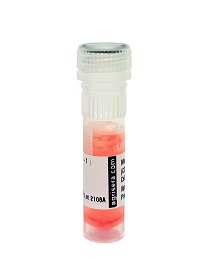1

Anti-Arabinogalactan-3 (clone CCRC-M85)
AS16 3133-1ml | Clonality: monoclonal | Host: Mouse | Reactivity: Acer pseudoplatanus, Arabidopsis thaliana, Solanum lycopersicum
From the laboratory of Michael G. Hahn, PhD, University of Georgia
- Product Info
-
Sub class: IgM Immunogen: MeBSA-conjugated sycamore maple (Acer pseudoplatanus) pectic polysaccharide.
Host: Mouse Clonality: Monoclonal Purity: Cell culture supernatant. Format: Liquid Quantity: 1 ml Storage: Antibody can be stored up to 1 month at 4°C, and at -80°C for up to 1 year. Make aliquots to avoid repeated freeze-thaw cycles. Please remember to spin the tubes briefly prior to opening them to avoid any losses that might occur from material adhering to the cap or sides of the tube. Tested applications: ELISA (ELISA), Immunohistochemistry (IHC), Immunofluorescence (IF) Recommended dilution: Undiluted or at 1 : 10 (ELISA), (IF), (IHC) - Reactivity
-
Confirmed reactivity: Acer pseudoplatanus, Arabidopsis thaliana, Solanum lycopersicum Predicted reactivity: Arabinogalactans from gum arabic, gum ghatti, and sycamore and tomato pectic polysaccharides Not reactive in: No confirmed exceptions from predicted reactivity are currently known - Additional Information
-
Additional information: Exact working dilution needs to be determined by end user - Background
-
Background: Arabinogalactans are polymers composed of arabinose and galactose monosaccharides. They exist in plants as free glycans or are attached to rhamnogalacturonan I or to protetein backbones. When attached to proteins they form arabinogalactan protein (AGP) which works as an intercellular signaling molecule. AGP also functions as a glue for sealing wounds in plants.
Arabinogalactans can be used as an additive in food, and as a replacement for starch in food or pharmaceutical products.
This pectic polysaccharide antibody belongs to the arabinogalactan 3 group of antibodies. Pectin consists of polysaccharides found in the primary cell wall of most plants which binds cells together in the middle lamella. - Product Citations
-
Selected references: Pattathil et al. (2012). Immunological approaches to plant cell wall and biomass characterization: Glycome Profiling. Methods Mol Biol. 2012;908:61-72.doi: 0.1007/978-1-61779-956-3_6.
Pattathil et al. (2012). Immunological approaches to plant cell wall and biomass characterization: Glycome Profiling. Methods Mol Biol. 2012;908:61-72.doi: 0.1007/978-1-61779-956-3_6.
Patathil et al. (2010). A comprehensive toolkit of plant cell wall glycan-directed monoclonal antibodies. Plant Physiol. 2010 Jun;153(2):514-25.doi: 10.1104/pp.109.151985.
Patathil et al. (2010). A comprehensive toolkit of plant cell wall glycan-directed monoclonal antibodies. Plant Physiol. 2010 Jun;153(2):514-25.doi: 10.1104/pp.109.151985. - Reviews:
-
This product doesn't have any reviews.
